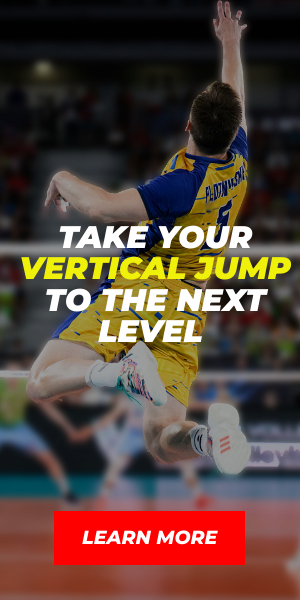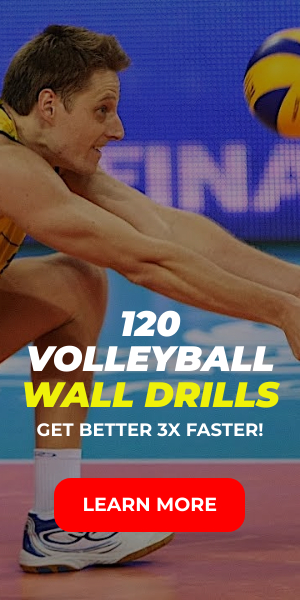Alright… you have got to agree that volleyball has to be one of the sexiest games with some of the sexiest sportsmen around. But the truth is that a lot of pain goes into all that sexiness. In fact, the high jumps and long dives make volleyball players more prone to injuries than most other sports players. Some of the most common volleyball related injuries are as follows.
Rotator Cuff Tendinitis
The rotator cuff muscles are the most important set of muscles that are used to generate power when serving and spiking. These muscles tend to wear out overtime leading to excessive pain. Normally physical therapy is recommended.
Finger Injuries
Blocking, setting, and digging make the fingers of a volleyball player more prone to a number of finger injuries such as fractures, dislocations, and tendon tears. Treatment can vary drastically depending on the type and degree of injury, but to put it in simple words; if you’re having trouble bending your fingers, get urgent help.
Ankle Sprains
Naturally, with the amount of high jumps and speed running done by volleyball players, ankle sprains are actually the most common injury found in volleyball athletes. Not to mention, ankle sprains also account for the highest lost in playing time owing to injury. And because of this reason, ankle injuries need to be halted for as short a duration as possible for players to get back running and jumping on their feet. Normally ankle injuries can be treated without having the need to operate on the injury; physical therapy and home rehabilitation exercises do just fine. Having said that, at times, fractures can make them a lot worse.
Patellar Tendinitis
These injuries are common in any athlete subjected to sports that require repetitive, forceful jumping such as… yep, you guessed it, volleyball players. In simple words, patellar tendinitis is an inflammation of the tendon that joins the knee cap to the tibia (or shin bone).
Anterior Cruciate Ligament (ACL) Injury
ACLs are typical of awkward landings after high jumps. The tears are with a “pop” and an immediate swelling in the knee. The tragedy however is that ACL tears do not heal. Therefore, if you’re a volleyball player looking to return to the game post an ACL injury, consider an ACL reconstruction.
Lower-back Pain
Lower-back pains tend to become a chronic issue for volleyball players. Or danger can increase if it comes from stress fractures called spondylolysis. The pain usually settles with rest, physical therapy and athletic training.
Dealing with volleyball injuries
Every year, thousands of volleyball-related injuries are dealt with and treated in sports fitness centers, ambulatory surgery centers and hospital emergency rooms. While they can’t really be avoided, the chances of incurring a volleyball related injury, and suffering subsequent damage and player downtime can definitely be minimized with the help of popper fitness training. And here’s how
Fitness training improves balance
A lot of people believe that playing sports is the best way to condition your body both physically and from a health perspective too. But indulging in sports such as volleyball without a clear understanding of body balance can lead to some serious issues. Of course you need to balance your body’s weight properly while serving and spiking, and also while making a proper landing after a jump. Volleyball athletes need to challenge their static and dynamic balance and improve coordination. The better balance you have as a volleyball player, the less likely are you to incur injuries due to bad response times, awkward landing, or by even simply falling over. And better balance only comes when training exclusively for it.
Improve your mobility
Another aspect of volleyball fitness pertains to mobility. If you’ve got to reach the ball from a far end of the court, then not only do you have to respond fast enough, but you also have to get their just about as fast. Mobility is crucial for volleyball players, and if you’re looking to boost yours, then a static lateral lunge with 3-way reach is the best exercise to get your legs and your body moving faster in the court.
Warm up
Before a game, always start by warming up and stretching your body. In fact, this goes for most sports. Cold muscles tend to be less flexible and thus more prone to injury. Hence it’s always a good idea to throw in some jumping jacks, stationary cycling, a lap or two of running or walking for 3 to 5 minutes, and lastly some dynamic stretching to warm up before the volleyball actually starts.
Train for strength
Three body parts that are used extensively during some high action volleyball are the lower back, shoulders and legs. In fact, as mentioned above, rotator cuff tendinitis and ankle sprains are the most common injuries experienced by volleyball players. Strength training thus becomes of immense importance to make your muscles and tendons strong and resistant to excessive amounts of stress during physical exertion. Most strength training programs tend to focus mindlessly on being nothing but explosive workouts. But it’s more important to choose the perfect strength program based on what your game requires and what your body can handle otherwise training excessively for strength too can in fact lead to the early onset of sports injuries. Now you wouldn’t want to render a potentially long and fruitful volleyball career by overdoing it, would you?
Train for jumps and dives
There’s obviously a lot of jumping and diving in volleyball. And naturally, there also tend to be a lot of knee crashes into the ground. You need to work on your jumps and volleyball plyometrics. Not only will these exercises help you move faster in the court by complementing you mobility-enhancing routine, but they will also help you jump higher at the net. You’ll be a lot more agile and thus wouldn’t really have to take abnormally long knee-breaking dives to hit the ball. And then, wear volleyball knee pads to protect yourself from injuries when you fall or dive while tossing some balls up high. A good plyometric routine includes;
15 minutes of cardio warm up
15 knee tuck jumps
15 lateral jumps
15 mountain climbers
15 broad jumps
15 burpees
15 squat jacks
15 agility dots
15 squat jumps
A couple of other pointers:
Use knee pads to keep your knees protected from some knee braking dives in the court
Chenille patches on your sleeveless upper wear go well with well-built arms, but don’t forget to wear defensive pants that are padded from hip to knee to give you extra protection against burns and bruises.
Lightweight shoes with ankle and arch support are great for additional shock absorption and protecting against ankle sprains.
“Call” the ball to avoid the risk of bumping into one of your teammates and crashing on the floor for a totally unnecessary and unwanted fracture!
And lastly, make sure that you’re prepared for any emergency situation!





